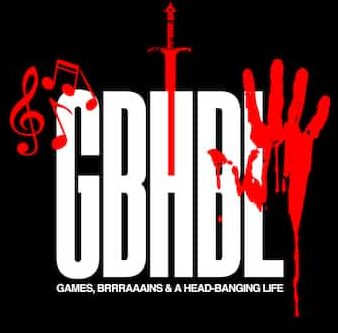Essential Things To Know When You Want To Become A Drummer
The drums are the main backbone of music due to its responsibility in setting a song’s groove. People can also immediately tell a song’s genre just by listening to the drums’ rhythmic patterns.
As a percussion, the drums are musical instruments that need to be struck to create melodic sounds and beats. The drums have been around since the earliest of times and have been on a constant journey towards enhancement.
If you’re an aspiring musician who wants to become a drummer, here are essential aspects you need to know to master the instrument.
Drums
It may be that you are interested in becoming a musician, but you do not know much about drumming and what it entails.
First of all, you should know what a drum is. The drum is a musical instrument that consists of a drum head, a shaft, and usually three or four feet of cymbals. Most drums are made up of either a wood or metal drum head. The most common type of drum is the nylon acoustic drum. However, there are several types of wood drums, such as cymbal and wooden bass drums. It all depends on how much you want to spend on your drum set.
The steel drum is a little bit more difficult to learn to play, but it can be a great bass drum. When playing on a steel drum, the drummer is able to have an authentic snare sound because the snare drum does not have a head, which makes it easier to strike. These types of drums are also commonly used for marching bands. They will be used in conjunction with a band drum in order to provide a solid and realistic drum sound to the band.
By knowing the types of drums that are used in a song, you will be better equipped to perform on stage with the instrument. This knowledge will allow you to feel like you are part of the song when you perform. Remember that you are playing for yourself and not for the audience, so you’re playing should be personal, expressive, and enjoyable to the listener.
Difference Between Acoustic and Electronic Drums
Some conventional drums are being integrated with electronics, sometimes even completely replacing the acoustic drums with electronic drums. Before you start playing the drums, you need to identify which type of drums you’ll be most comfortable playing. Acoustic drums, also called traditional or conventional drums, are composed of wooden shells. On the other hand, electronic drums are made with mesh drumheads, plastics, and rubber pads.
However, the key difference between acoustic and electronic drums is the array of digital sounds you can play with electronic drums by using modules. Modules are used to produce different sounds with electronic drums. While basic electronic drumsets come with pre-installed modules, you have the option to use other modules, such as what’s found here https://abovehouse.com/best-roland-drum-modules/
Different Materials Produce Different Sounds
Drums are commonly composed of wooden shells and few metals. The type of wood used for these instruments has a very wide range, where each wood generates different sounds. Occasionally, some of the wooden and metal parts are replaced with synthetic materials, such as durable plastics. However, replacing the materials with plastics results in two different things, either to build a cheaper kit or change the tone’s outcome.
In electronic drums, however, materials used won’t have any effect on sound production. In order to produce different sounds, you’ll have to use samples available in drum modules. The different samples can be used to explore creative sounds and compositions.
In a MusicRadar interview, Paul Landers of Rammstein said their drummer, Christoph Schneider, uses electronic drums to lay down creative ideas with his band.
Get to Know the Drumset
There are several types of drums, for different types of music and genres, available on the market. One of the most renowned drums is a drumset.
The basic drumset is composed of 5 different drums and a combination of different cymbals. These include the snare drum, kick drum, two (2) tom-toms, and a floor tom. Alongside these drums, are the high-hats, a crash cymbal, and a ride cymbal.
Drumsets are commonly used by different types of bands, ensembles, and even orchestras.
To learn how to play the drumset, one must first know and understand the parts and how they work.

Learn How to Hold the Drumsticks
The drums are played by striking them with wooden sticks, more commonly known as drumsticks. Drumsticks on their own have a wide range of categories. These sticks differ in kinds of wood, sizes, weight, and tips. All are made for different types of playing.
There are two ways you can hold the drumsticks:
- Traditional Grip
The traditional grip is done by holding the drumsticks differently on both hands. Your left hand will grip the left drumstick like a fork, while your right hand will grip the drumstick like a wand.
- Matched Grip
The matched grip is done by holding both drumsticks like a wand.
Learn About Time Signatures and BPM
Drummers play their instruments based on the beat and speed of a song. The beat is often referred to as the Time Signature and the speed or tempo is referred to as the BPM (Beats Per Minute).
- Time Signature
The time signature tells how many beats (pulses) there are within each bar. It also tells you which note is to be given a beat.
The most common time signatures are as follows:
- Common time or 4/4
- Cut-common time or 2/2
- 2/4
- 3/4
The numbers on the top tell how many beats constitute a bar. This could be any number given that’s not a fraction. The numbers on the bottom state the type of beat. This tells you how many counts there are per note.
Know Your Rudiments
Drummers are often the main source of time signatures and BPMs. Therefore, a drummer must always play in time. This means that the drummers’ strike should be equally distributed.
Rudiments are different drum patterns that a drummer can play, either for practicing or even as a musical output. These patterns are laid out as R & L (Right hand & Left hand) to identify which hand to use in hitting the drums.
Here are some of the most basic rudiments:
- Single Stroke Roll
The single stroke roll pattern uses R, L, R, L.
The single stroke roll’s pattern can also be inverted to L, R, L, R. Although, you have to make sure to learn and master the former before proceeding to the inverted variation. This will make the transition from your right hand to your left hand seamless.
- Double Stroke Roll
The double stroke roll pattern uses R, R, L, L.
The double stroke roll is almost identical to the single stroke roll’s pattern. However, the double stroke roll hits two notes with one hand before moving on to the next hand. This pattern is also referred to as a “Diddle”.
- Paradiddle
This pattern is R, L, R, R, L, R, L, L.
The paradiddle is probably one of the most famous patterns used by drummers. It’s also often used in almost every type/genre of music.
The Role Of Drummers In Modern Music
Drummers play an important role in a band. When it comes to modern music, drums provide rhythm, dynamics, and melody, which are elements that make drummers important to any musician or group they want to play with.
Drummers lay the foundations, provide the pulse, and bring the groove for the music track. They let the rest of the band members express themselves freely and creatively. Drummers, like Jay Pugh, contribute much to the music industry.
What’s Next?
After learning the essentials, you need to put theory into practice. Start by perfecting your timing by playing alongside a metronome. Put aside a certain time of day to practice your rudiments and strengthen your drumstick grip.
Take note that you’ll encounter difficulties in muscle coordination because the drums have several parts that need to be struck consecutively and successively in order to produce good beats. Just like any other aspiring musician, you need to dedicate yourself to your instrument to be able to perform like your favorite musical icons.
Now, there’s no time to waste. If you really want to become a drummer, start practicing your craft today.



